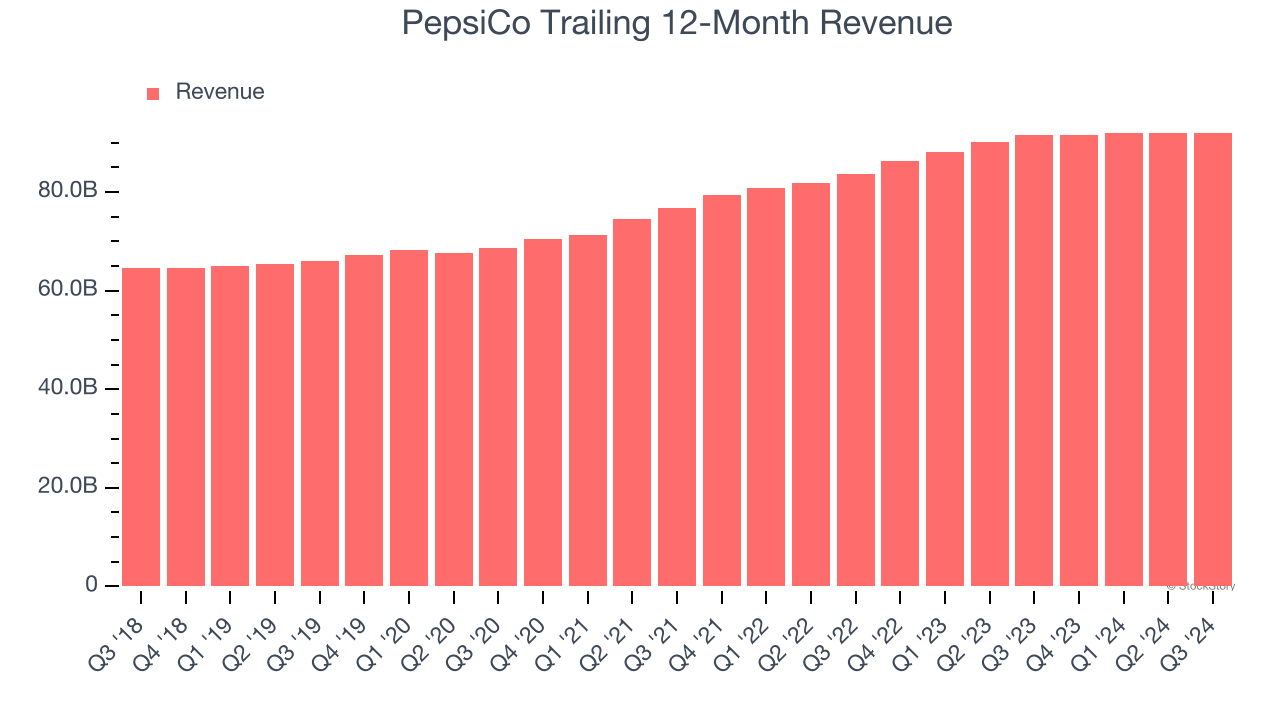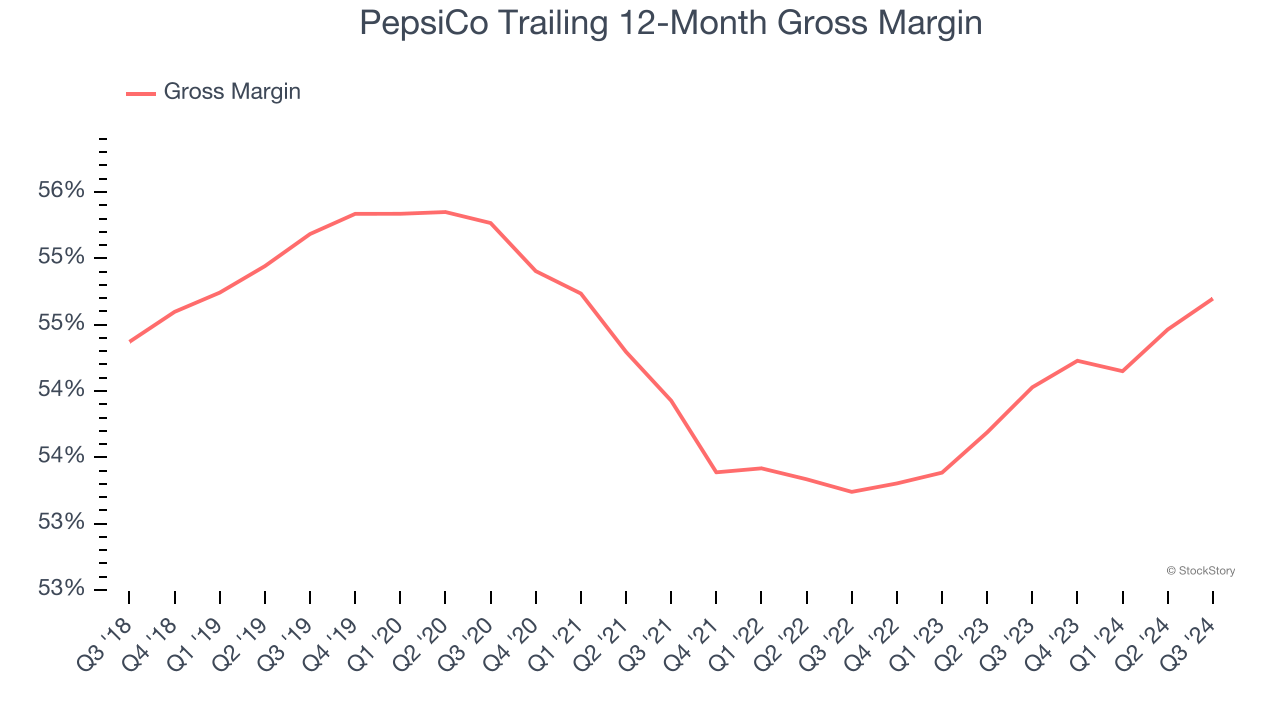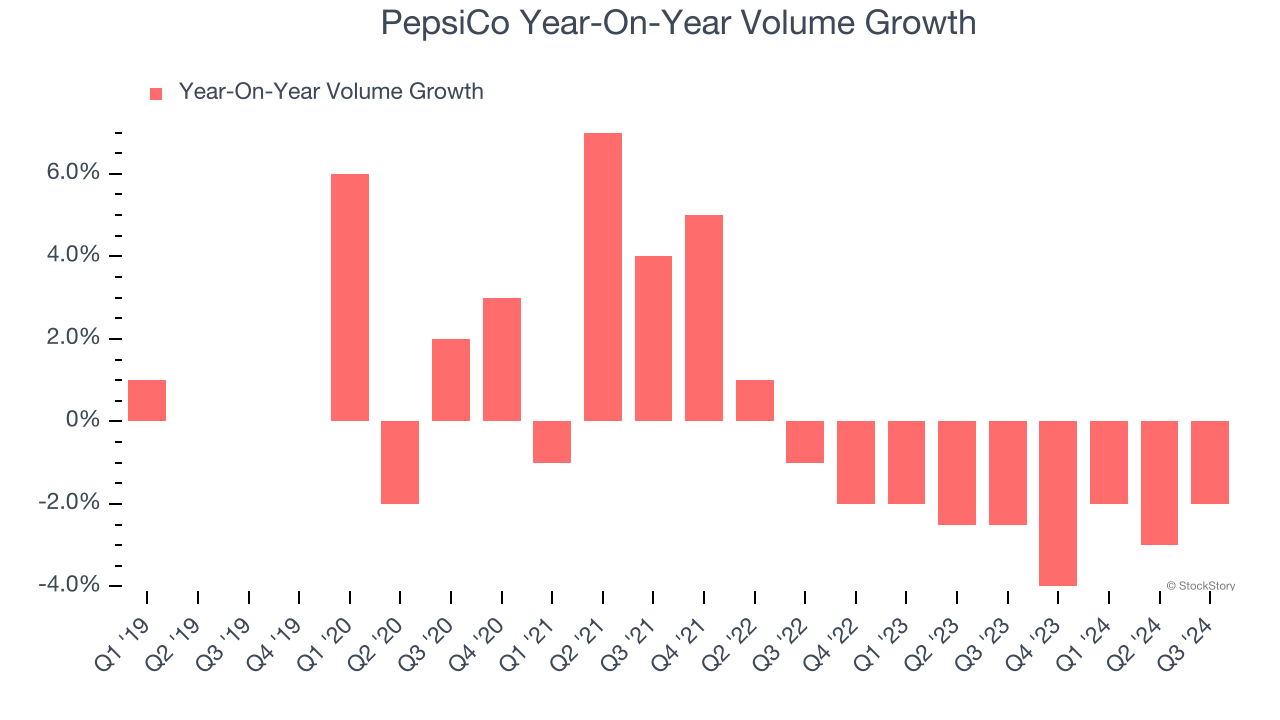
Over the past six months, PepsiCo’s shares (currently trading at $150.59) have posted a disappointing 7.4% loss, well below the S&P 500’s 6.4% gain. This was partly driven by its softer quarterly results and might have investors contemplating their next move.
Following the drawdown, is now an opportune time to buy PEP? Find out in our full research report, it’s free.
Why Does PepsiCo Spark Debate?
With a history that goes back more than a century, PepsiCo (NASDAQ: PEP) is a household name in food and beverages today and best known for its flagship soda.
Two Positive Attributes:
1. Economies of Scale Give It Negotiating Leverage with Suppliers
PepsiCo is one of the most widely recognized consumer staples companies. Its influence over consumers gives it negotiating leverage with distributors, enabling it to pick and choose where it sells its products (a luxury many don’t have). However, its scale is a double-edged sword because it's harder to find incremental growth when your existing brands have penetrated most of the market. To accelerate sales, PepsiCo must lean into newer products.

2. Elite Gross Margin Powers Best-In-Class Business Model
All else equal, we prefer higher gross margins because they usually indicate that a company sells more differentiated products, has a stronger brand, and commands pricing power.
PepsiCo has best-in-class unit economics for a consumer staples company, enabling it to invest in areas such as marketing and talent to grow its brand. As you can see below, it averaged an elite 54.4% gross margin over the last two years. That means for every $100 in revenue, only $45.64 went towards paying for raw materials, production of goods, transportation, and distribution. 
One Reason to be Careful:
Demand Slipping as Sales Volumes Decline
Revenue growth can be broken down into changes in price and volume (the number of units sold). While both are important, volume is the lifeblood of a successful staples business as there’s a ceiling to what consumers will pay for everyday goods; they can always trade down to non-branded products if the branded versions are too expensive.
PepsiCo’s average quarterly sales volumes have shrunk by 2.5% over the last two years. This decrease isn’t ideal because the quantity demanded for consumer staples products is typically stable. 
Final Judgment
PepsiCo’s merits more than compensate for its flaws. After the recent drawdown, the stock trades at 17.6× forward price-to-earnings (or $150.59 per share). Is now a good time to buy? See for yourself in our comprehensive research report, it’s free.
Stocks We Like Even More Than PepsiCo
With rates dropping, inflation stabilizing, and the elections in the rearview mirror, all signs point to the start of a new bull run - and we’re laser-focused on finding the best stocks for this upcoming cycle.
Put yourself in the driver’s seat by checking out our Top 6 Stocks for this week. This is a curated list of our High Quality stocks that have generated a market-beating return of 175% over the last five years.
Stocks that made our list in 2019 include now familiar names such as Nvidia (+2,691% between September 2019 and September 2024) as well as under-the-radar businesses like United Rentals (+550% five-year return). Find your next big winner with StockStory today for free.




